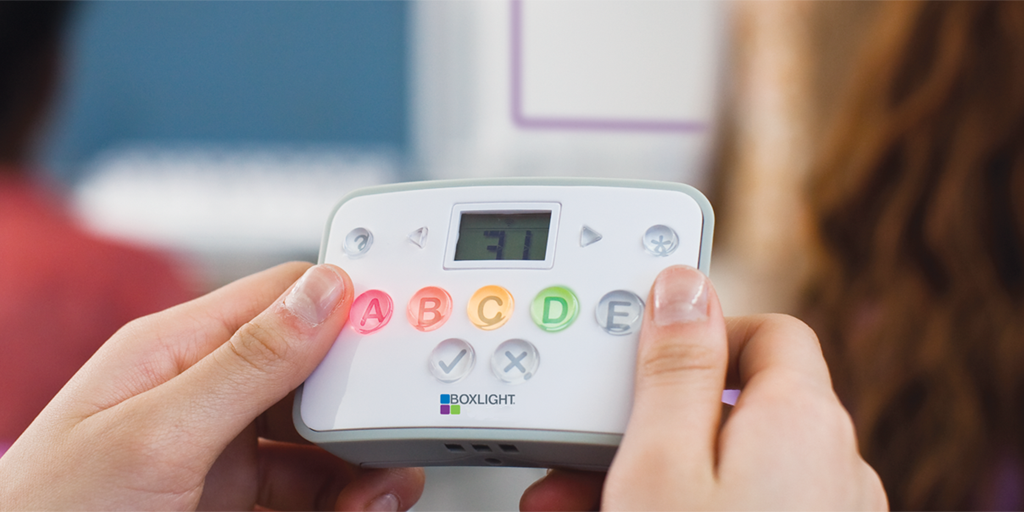
In the book Good to Great, Jim Collins wrote at length about technology as an “accelerator.” It was important to note that the acceleration technology created could go in either direction. Companies with a clear vision and plan could use technology to improve outcomes rapidly, while those that did not have a solid foundation and invested heavily in technology “accelerated” their demise.
The world of education is probably not much different to these companies. Schools that have clear instructional goals, a solid foundational curriculum, and engaging practices can use technology to move from good to great.
Assessing Students’ Understanding
 One of the best ways, in my opinion, to accelerate high levels of learning is to create a classroom in which feedback is gathered quickly and acted upon. Learning occurs through this cycle of content delivery, questioning, response, correcting misconceptions (or deepening learning), and questioning again. Technology can help make this process easy and efficient.
One of the best ways, in my opinion, to accelerate high levels of learning is to create a classroom in which feedback is gathered quickly and acted upon. Learning occurs through this cycle of content delivery, questioning, response, correcting misconceptions (or deepening learning), and questioning again. Technology can help make this process easy and efficient.
The perfect tool for this is an assessment clicker like the MimioVote assessment system. Teachers can easily create formative assessments with this tool while students actively participate in the lessons and stay engaged. The best part is that teachers have real-time feedback about student learning. They are able to check for understanding and, if they are well prepared, they can act on the data instantly. This type of teaching can really “accelerate” the learning in a classroom. Instead of a teacher taking papers home to grade and returning the feedback the next day, students know instantly if they are on the right track.
Here are three models for how this could work:
- During whole group instruction, the teacher feels like the class is ready to move on. She gives the students three questions through the assessment system that are similar to questions that will appear on the test. A few students in the class gets three out of three, and about half the class misses all of the questions. There is obviously a need to reteach the lesson, so the teacher starts over with a different strategy to help them understand the content more fully.
- Prior to center time, the teacher uses the assessment system to group the students. Five comprehension questions are asked. The students who clearly have mastery (5 out of 5) are placed in a group with a para to do enrichment lessons. The students who are close to mastery (3 or 4 out of 5) are placed in a group to reread the story and complete an alternate assignment. The students who clearly still don’t understand the concept (0, 1, or 2 out of 5) stay with the teacher at the teacher table to start at the beginning to figure out where the students’ misconceptions lie.
- The teacher has been building on a concept all week and expects most students to have the content learned. He posts a ten-question quiz on the assessment system and is able to see that only two students are below an 80% mastery level. These students are invited in before school the next day. The teacher goes through the quiz with them, then shows them why a few of their responses were incorrect.
Of course, much of this can happen without technology, right? Kind of. Part of the genius of tools like the MimioVote assessment system is that all students have to respond. Think about when a teacher asks, “Are there any questions?” or “Do you all understand this?” Passive students won’t assert themselves to respond to these questions. With the MimioVote clicker, all students have the tool in their hands and are required to respond. Until all students in the class respond, the teacher won’t continue. This means that all students are being reached and evaluated, not just the ones with their hands up.
Accelerating the Learning Process
In thinking back to Good to Great and technology as an accelerator, using technology to formatively assess students doesn’t accelerate the learning in the way that students get through the material more quickly. Instead, it accelerates the process of learning and correcting misconceptions of students. A student who isn’t understanding something is able to know right away that they are not getting the concepts. Even better, the teacher is able to know this right away, too. This makes for a learning cycle that is much more adaptive and student-centered. As stated earlier, one of the keys to the success of this is planning on the teacher’s end. The assessments must be created ahead of time, and the teacher must have a plan ready for those who have reached mastery and those who have not. Without the plan in place, the acceleration will quickly head in the wrong direction.
Click here to learn more about MimioVote and how to use assessment as a powerful tool for instruction.



